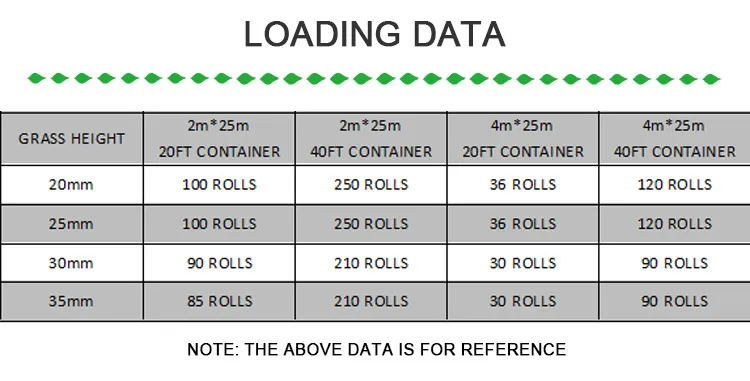
- Afrikaans
- Arabic
- Belarusian
- Bengali
- Czech
- Danish
- Dutch
- English
- Esperanto
- Estonian
- Finnish
- French
- German
- Greek
- Hindi
- Hungarian
- Icelandic
- Indonesian
- irish
- Italian
- Japanese
- kazakh
- Rwandese
- Korean
- Kyrgyz
- Lao
- Latin
- Latvian
- Malay
- Mongolian
- Myanmar
- Norwegian
- Persian
- Polish
- Portuguese
- Romanian
- Russian
- Serbian
- Spanish
- Swedish
- Tagalog
- Tajik
- Thai
- Turkish
- Turkmen
- Ukrainian
- Urdu
- Uighur
- Uzbek
- Vietnamese
Synthetic Soccer Field Design and Construction for Enhanced Gameplay Experience
Nov . 10, 2024 17:28 Back to list
The Rise of Artificial Football Grounds
In recent years, the world of football has seen significant innovations in the way the game is played and experienced, one of which is the advent of artificial football grounds. These synthetic turfs have transformed the landscape of sports facilities, offering numerous advantages over traditional grass pitches while also posing some challenges.
Artificial football grounds, often made from materials such as polyethylene or polypropylene, are designed to mimic the playing characteristics of natural grass. One of the primary benefits of synthetic surfaces is their durability. While natural grass fields require regular maintenance, including mowing, watering, and fertilizing, artificial turf can withstand heavy use and harsh weather conditions without deteriorating. This makes it an ideal choice for schools, recreational leagues, and professional clubs alike, particularly in regions where the climate can be unpredictable.
Another significant advantage of artificial football grounds is their ability to provide a consistent playing surface. Natural grass can become uneven or muddy, leading to unpredictable ball behavior and increased risk of injuries. In contrast, synthetic fields deliver a reliable playing experience, allowing players to focus on their skills and strategies rather than adjusting to varying pitch conditions. This reliability is especially crucial during competitive matches, where even the slightest change in surface can impact performance.
Moreover, artificial turf enables year-round play. Unlike natural grass, which can become unplayable in winter months or during heavy rainfall, synthetic pitches can be used almost any time of the year. This accessibility encourages more participation in football, from grassroots levels to organized leagues, helping to grow the sport's popularity and engagement in communities.
artificial football ground

However, the transition to artificial grounds is not without its controversies and concerns. One primary issue often raised is the environmental impact of synthetic materials. While it can be argued that these fields reduce water usage—an important factor in drought-stricken areas—the production and disposal of artificial turf can contribute to environmental problems. Many synthetic turfs are made from non-biodegradable materials, leading to concerns about landfill waste when they reach the end of their lifespan.
Another point of contention surrounds player safety. While modern artificial turfs are engineered to be safe, there are still debates about the risk of injury compared to natural grass. Studies have indicated that certain types of turf can increase strains and sprains, which is a significant consideration for athletes and coaches alike. Additionally, concerns regarding the heat retention of synthetic surfaces in hot weather conditions have also been raised, with some studies suggesting that temperatures on artificial pitches can be significantly higher than those on natural grass.
As the debate continues, the future of artificial football grounds appears promising. Advances in technology are leading to the development of eco-friendly synthetic materials and improved designs that enhance player safety and performance. For instance, some companies are now focusing on producing turf that is made from recycled materials or that mimics the resilience of natural grass while providing a softer landing for players.
In conclusion, artificial football grounds have undoubtedly revolutionized the way football is played, promoting accessibility, consistency, and durability. While challenges remain, particularly regarding environmental and safety concerns, ongoing innovations present exciting opportunities to enhance the sporting experience. As the world embraces these advancements, the beautiful game continues to evolve, ensuring that football remains accessible and enjoyable for generations to come.
-
The Benefits of Artificial Turf for Indoors
NewsJul.15,2025
-
How Artificial Grass Suppliers Ensure Quality Products
NewsJul.15,2025
-
Artificial Grass and Pets: A Space for Relaxation
NewsJul.08,2025
-
Balcony & Outdoor Decoration with Artificial Grass
NewsJul.08,2025
-
Best Indoor Artificial Grass for Home
NewsJul.07,2025
-
Best Pet Turf for Dogs: Safe & Durable Artificial Grass Options
NewsJul.07,2025
Products categories









